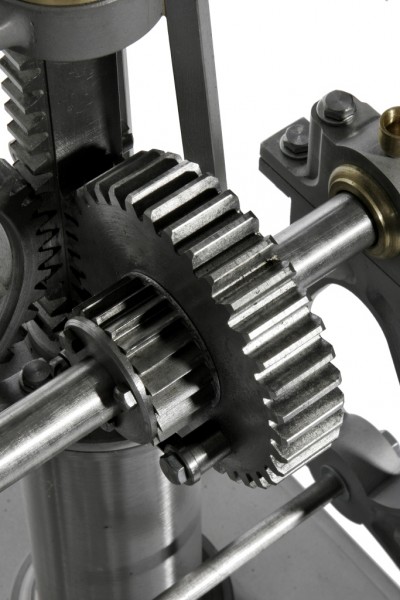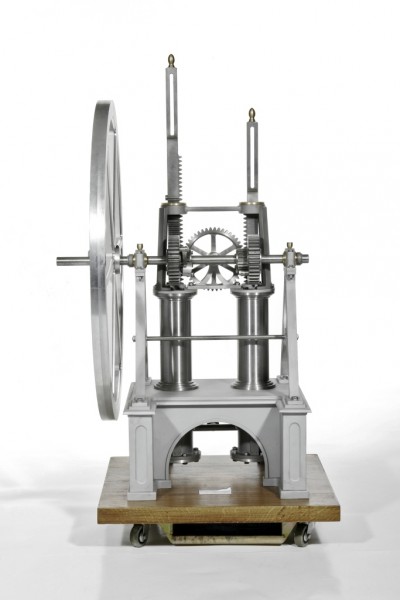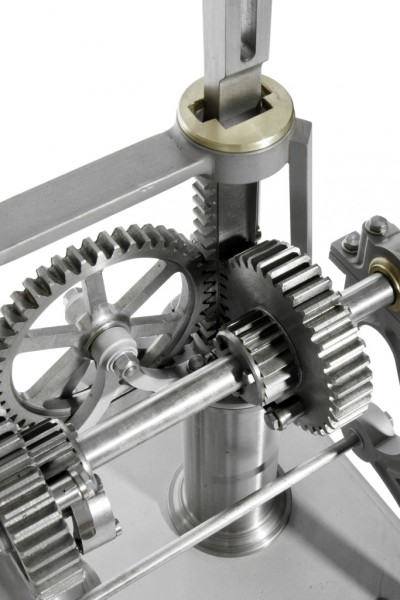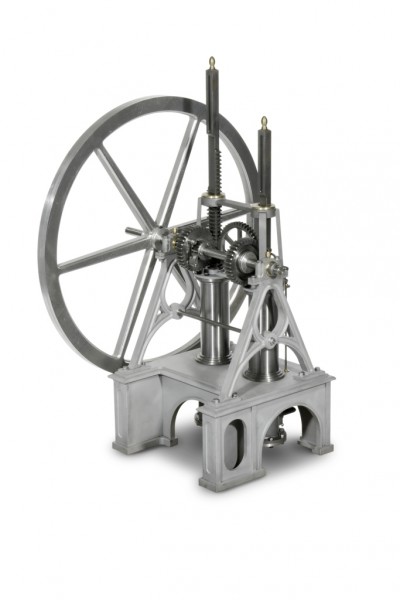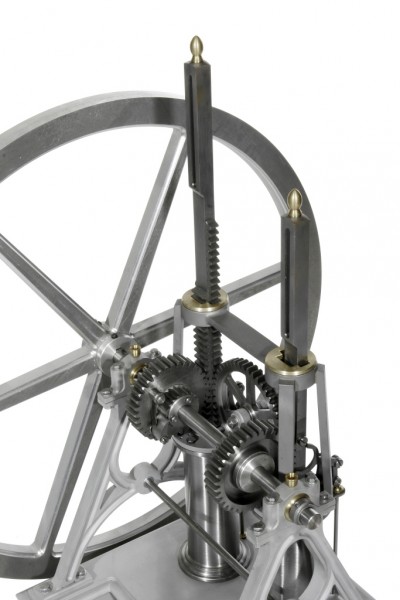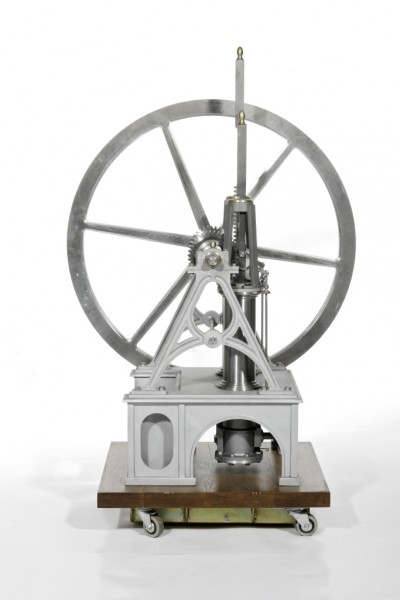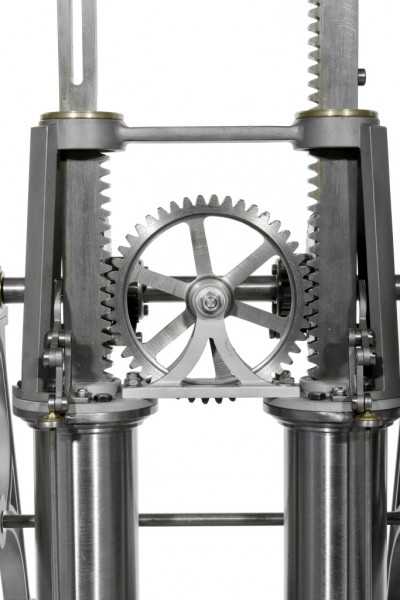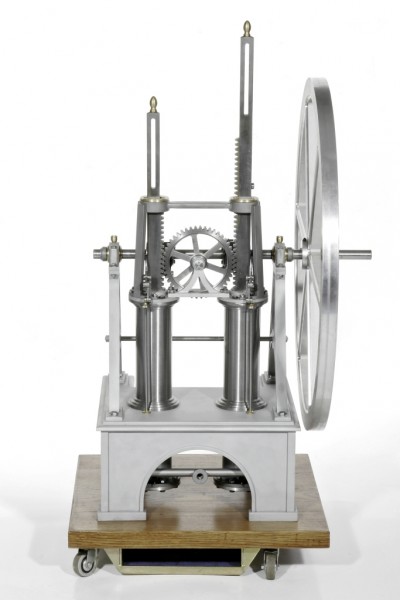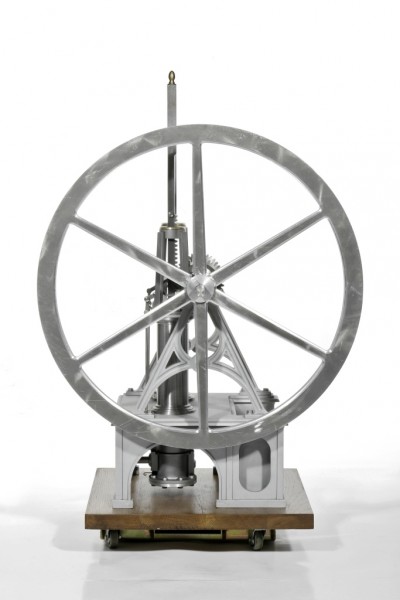1:2.5 scale model conforming to the English Certificate of 13.05.1854.
Installed and used in 1856 in Florence by the workshops in the Maria Antonia station in Florence for driving a drill and shears, formed of a vertical axle two-cylinder engine. Deferred action body atmosphere for the return stroke.
Electric spark ignition. A slide valve gear used to regulate the introduction of the fuel formed of a mixture of air and illuminating gas.
At the beginning of 1852 Eugenio Barsanti and Felice Matteucci got together in an ambitious project to exploit the expansion of a gassy mixture formed of hydrogen and atmospheric air, ignited by an electric spark, to transform part of the energy from the explosion into movement energy.
After a few practical applications, in 1864 series production began of the new engine but the sudden death of Barsanti blocked the project. It was the lack of widespread use of the new engine and the lack of drive and determination of their father Scolopio that caused Barsanti and Matteucci to lose the primacy for the invention, which was instead attributed to two German engineers Otto & Langen.
In 1867 they presented their engine at the Universal Exhibition in Paris, which copied the working principle and many technical solutions of the Italians’ engine, as was pointed out by the more attentive journalists at that time, but despite that it won the first prize to the great disappointment of Matteucci.
Today, from the documentation we have received, while not denying anything to Otto and Langen, we know that Barsanti and Matteucci’s engine fully deserves to be considered the first internal combustion engine in history.
2007 - Displayed at the exhibition Fodazione Barsanti e Matteucci, Firenze.

